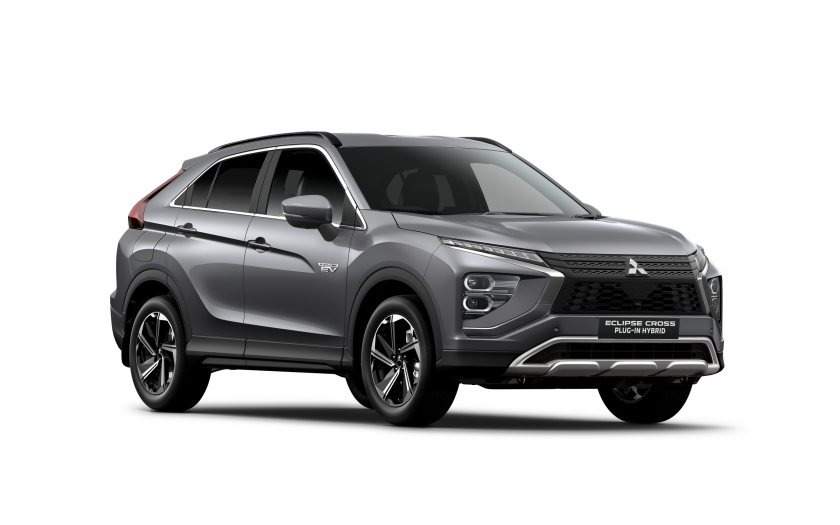Chris Riley tests the 2024 Mitsubishi Eclipse Cross Aspire plug-in hybrid small SUV with pricing, specs, ride and handling, safety, verdict and everything the over-50 driver needs to know.
Summary: Paying an additional $14,750 for the PHEV option won’t make financial sense for a lot of buyers. You’ll need to see if it works for you. If not, save the dollars and buy the ICE version.
2024 Mitsubishi Eclipse Cross Aspire plug-in hybrid small SUV
Price: $51,740 (plus on road costs)
Options: premium paint $940, carpet floor mats $144
Warranty: Five-years, 100,000 km (ten years if serviced by Mitsubishi), one-year roadside assist, eight-year 160,000km battery warranty
Safety: five-star ANCAP (2017)
Build location: Japan
Engine: 2.4-litre naturally aspirated petrol engine, two electric motors
Power: 94kW @ 4500rpm, electric motors: 60kW, 70kW
Torque: 199Nm @ 4500rpm, electric motors: 137Nm, 195Nm
Transmission: single speed automatic, all-wheel drive
Body: 4545mm (long); 1805mm (wide); 1685mm (high)
Luggage capacity: 359L (seats up)
Kerb weight: 1920kg
Ground clearance: 188mm
Braked towing capacity: 1500kg
Wheels: 18-inch alloy
Tyres: 225/55 R18
Spare wheel: mobility kit
Turning circle: 10.9m
Fuel tank: 45 litres
Battery: 13.8kWh
Range: 45km on battery power (WLTP)
Official consumption: 1.9L/100km (91 RON unleaded fuel)
Consumption on test: 6.5L/100km (800km)
seniordriver consumption on test: not tested
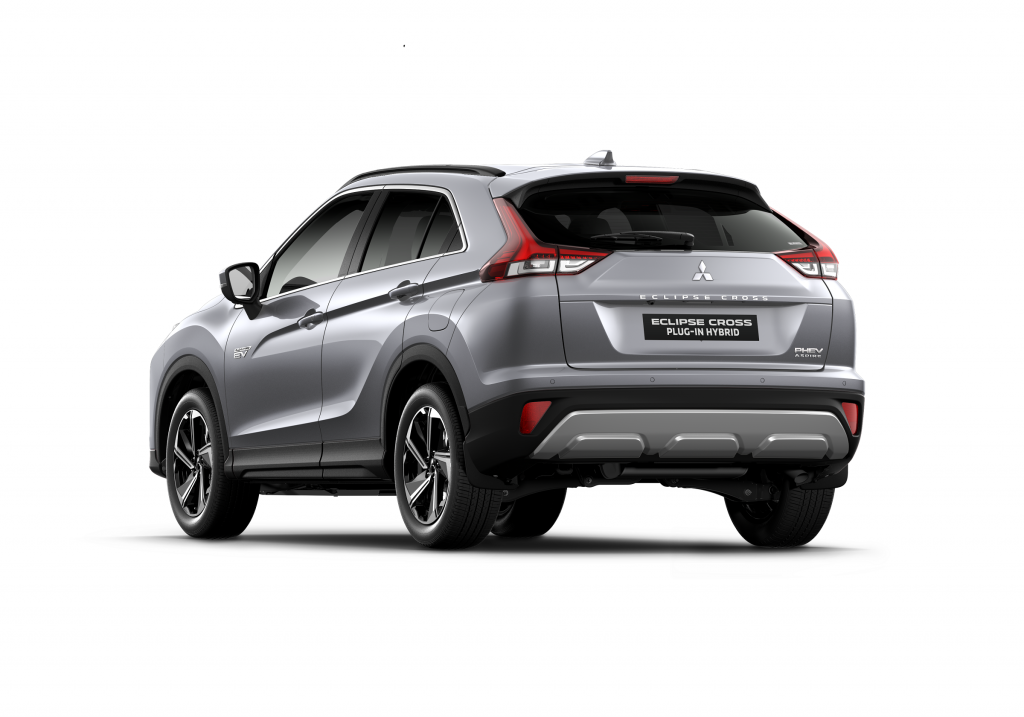
[review]
I read somewhere that the Government was going to drop financial incentives for plug-in hybrids in April next year.
I’m not surprised. While PHEVs look good on paper, with their ultra-low fuel consumption figures – the reality is very different.
For example, vehicles like the Mitsubishi Eclipse Cross PHEV are good for a claimed 1.9L/100km.
But to achieve this figure, you need to recharge the battery every 100km, or the final figure is liable to be considerably higher.
Basically, the battery provides 45km of petrol-free travel for the first 100km travelled, 45km for the next and so on.
Don’t recharge the battery and you won’t reap the benefit.
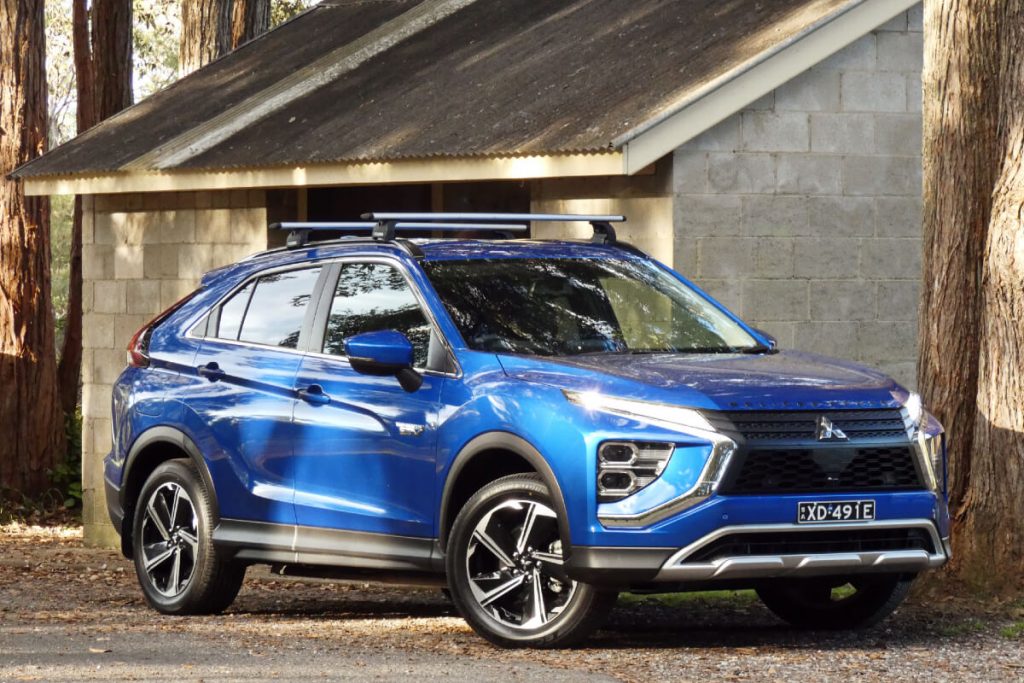
What’s it cost?
With seating for five occupants, Eclipse Cross sits between ASX and Outlander in terms of size.
There are three plug-in hybrid versions from which to choose: ES, Aspire and Exceed.
Prices start from $47,790 for ES, $51,740 for Aspire and $56,490 for top of the line Exceed.
Out test vehicle was the mid-range Aspire. At the price, it’s $14,750 more than the equivalent petrol model, although it is two-wheel drive – still that’s a lot to fork out for 45km.
All PHEVs come with an auto and all three are underpinned by all-wheel drive.
Standard kit includes cloth trim, two-zone climate air conditioning, 18-inch alloys, push button start, LED daytime lights, cruise control and rear parking sensors.
Aspire adds suede and synthetic leather trim, heated front seats, power-adjust driver’s seat, LED headlights, front parking sensors, along with adaptive cruise control, 360-degree camera, blind spot warning, lane change assist and rear cross traffic alert.
Exceed adds full leather, heated rear seats, a heated steering wheel, power-adjust passenger seat, built-in navigation, head-up display and a double sunroof – plus an ultrasonic mis-acceleration mitigation system.
The PHEV received some minor updates earlier last year, including a power tailgate for Exceed and V2L (the ability to power external equipment) for Aspire and Exceed.
For a car with a focus on technology, however, it lacks wireless phone charging and latest USB-C ports or a 12-volt socket in the cargo area.
Ditto rear air vents.
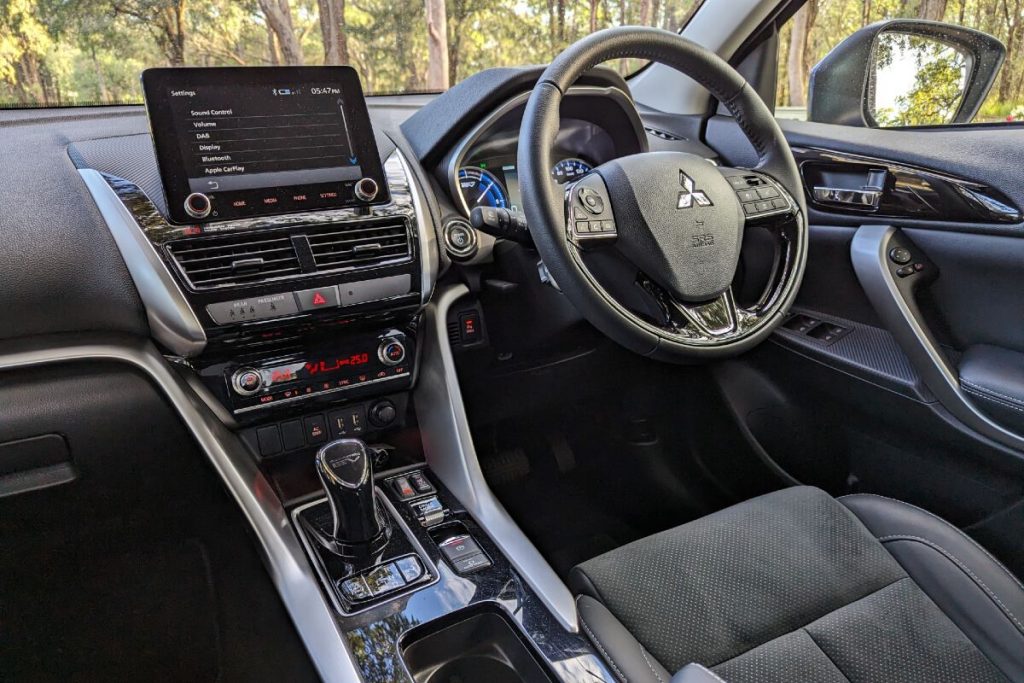
Infotainment comprises a now small 8.0-inch touchscreen, Bluetooth with voice control, AM/FM and DAB+ digital radio, wired Apple CarPlay and Android Auto and an eight-speaker Mitsubishi-branded sound system.
Standard safety includes seven airbags, rear view camera, automatic emergency braking and lane departure warning, plus an ultrasonic mis-acceleration mitigation system.
The latter reduces the chance and severity of hitting obstacles when the driver mistakenly presses the accelerator when stationary or at speeds of up to 10km/h.
It’s covered by a 10-year warranty and 8-year/160,000km battery warranty.
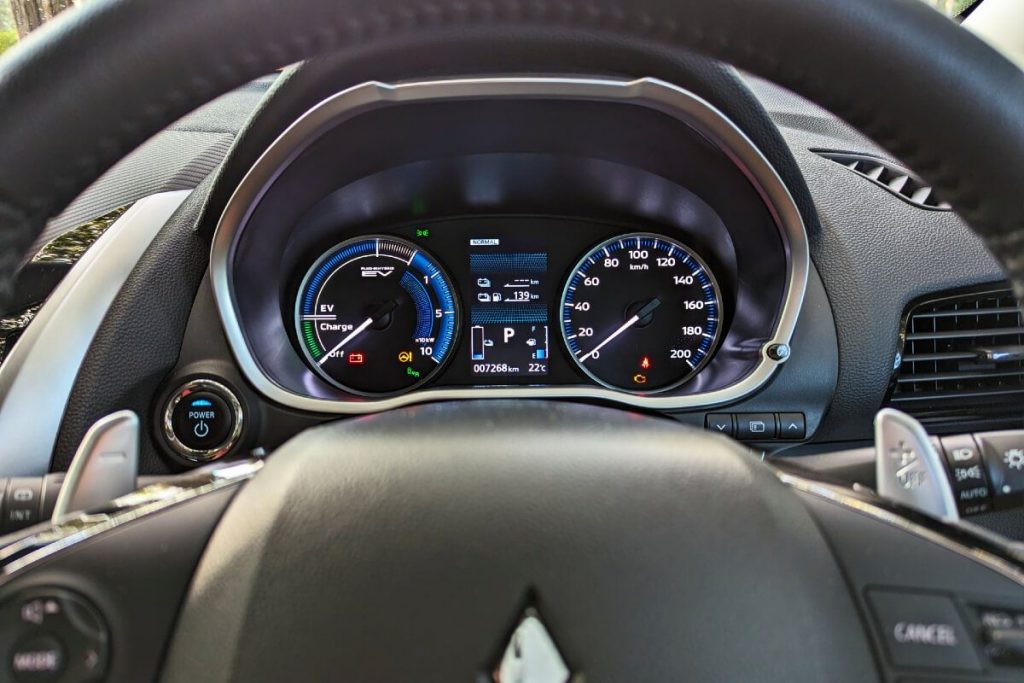
What’s it go like?
The Eclipse has grown a little in size since launch.
It now offers a pleasant, comfortable environment, with more rear legroom and a larger boot.
The cool two-piece rear window has gone, replaced by a conventional and probably cheaper one-piece unit.
A revised instrument cluster displays engine speed as well as EV charge levels and battery use – but alas no digital speedo.
The front seats and steering wheel are heated, but cooling would have been a better option given our climate.
Although larger overall, plug-in hybrid versions have a smaller boot than the standard model because of the space occupied by the battery pack.
At the same time the spare wheel has been replaced by a tyre repair kit.
The powertrain comprises a 2.4-litre petrol engine with two electric motors, one for the front and one for the back axle – plus a 13.8 kWh battery.
The engine produces 94kW of power and 199Nm of torque, while the electric motors deliver 60kW/137Nm and 70kW/195Nm each.
A combined figure is not provided, but throttle response is sharp thanks to the instant torque from the electric motors.
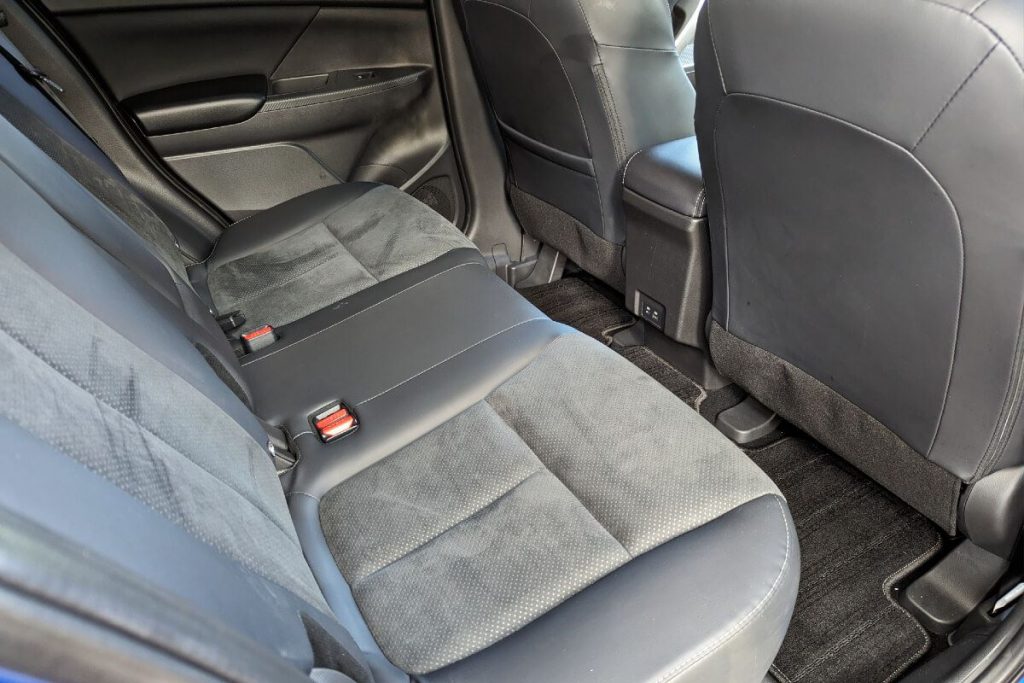
Drive is to all four wheels through a single-speed transmission and is remarkably smooth.
The PHEV system is ‘EV-biased’ and prioritises EV mode wherever possible, but can deploy series or parallel hybrid modes when required.
In EV mode (available from 0–135km/h), the PHEV is powered by the front and rear electric drive motors, drawing current from the battery.
In series hybrid mode (available from 0-70km/h), the car continues to use the battery to power the front and rear motors, while the petrol engine is engaged to run the generator to charge the battery while driving.
This mode is also automatically activated when the driver wants maximum acceleration, or for example when driving uphill or when battery charge is low.
In this mode, the vehicle will attempt to revert to EV Mode as often as possible for maximum efficiency and minimum emissions.
In parallel hybrid Mode (available above 70km/h), the PHEV operates like a traditional hybrid.
This means the petrol engine drives the front wheels in tandem with the front electric motor via the multi-mode front transaxle, while the rear electric motor drives the rear wheels.
Once again, the vehicle is configured to revert to EV mode or series hybrid mode whenever possible.
Regenerative braking is available in all three modes and can be adjusted via paddles on the steering wheel.
There’s five steps that add drag when you take your foot off the throttle, sending energy back to the battery.
But, unlike other vehicles of this kind, you still need to apply the brakes.
A button marked ‘SAVE CHRG’ suggests you can save the battery charge for use later, but it’s a bit confusing.
The whole PHEV thing might sound a bit complicated, but there’s no need to worry because the car takes care of everything – everything, that is, apart from charging.
The PHEV has AC Type 2 and DC CHAdeMO style input sockets.
Using the supplied cable and a regular 10A power point it takes seven hours to fully charge.
It’s also supplied with a second cable for faster Mode 3 charging using a wall charger which takes four hours, while charging to 80 percent with a full-blown commercial DC charger takes 25 minutes.
The Mitsubishi Remote Control app allows drivers to plan and activate battery charging remotely via the app, to take advantage of off-peak electricity tariffs.
Mitsubishi claims 55km of electric range, but that’s under the old NEDC standard.
Under the newer, more stringent WLTP system, it’s actually 45km – but 55 sounds better.
Basically, if you live in the ‘burbs, Mitsubishi claims the electric range is sufficient to pop into the city and back without needing to recharge.
We reckon it’s a costly option and a lot of mucking around for little in return.
The cynical might suggest it has more to do with satisfying emissions requirements across the range rather than delivering real world benefits.
At the same time, because it’s a plug-in hybrid, you don’t need to worry about being stranded.
When the juice runs out, the petrol engine kicks in.
Hybrid questions aside, the PHEV is a heavy car and this has implications for ride and handling.
There are five drive modes: tarmac, snow, gravel, normal or economy.
Normal or Eco are what most urban motorists will use, while Tarmac is in effect a sport mode in which the car becomes tauter, sportier and more responsive.
The ride is harsher on anything apart from smooth bitumen, even though they’ve done a bit of work on the rear suspension.
You feel all the little imperfections and the car can take longer than normal to settle as it continues to bounce up and down on the suspension.
That weight means and the fact the car sits relatively high also means it has a tendency to run wide in corners, with squeal hard braking and lift-off oversteer when braking late and hard into corners.
The steering lacks any sort of feel.
In fact, you can waggle (technical term) the steering wheel from side to side with little or no effect on the direction of travel.
It’s like trying to change direction in the billy carts we used to build as kids in the backyard with wood pinched from building sites.
A sports car it is not.
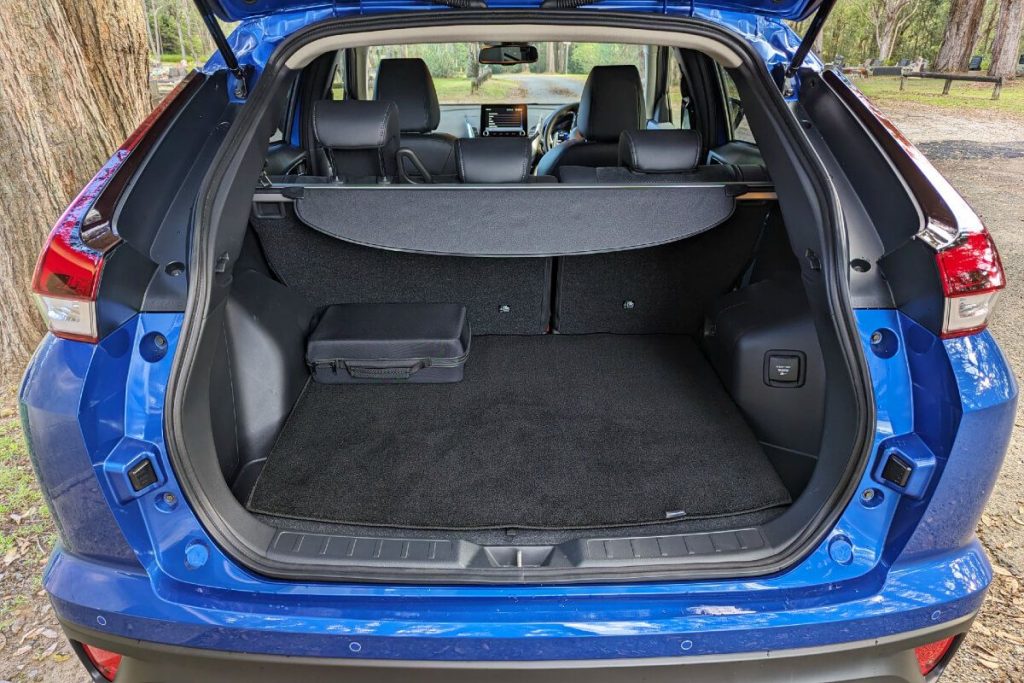
With a 45-litre tank, it takes regular 91 unleaded.
We were getting 6.5L/100km after 800km, bearing in mind that trip computers in Mitsubishis are prone to reset no matter what you do
Thirty-nine percent of our time was spent in EV mode.
No sure how this can be, as we never recharged the battery after the initial charge was depleted.
This compares with 7.7L/100km for the 1.5-litre turbocharged all-wheel drive version of the car.
On a final note, our test vehicle was fitted with Mitsubishi-branded roof racks, which were the source of an annoying hum at speed.
What we like
- Hybrid
- Comfortable seats
- Sharp performance
- Long warranty
What we don’t like
- Expensive
- Short electric-only range
- No digital speedo or navigation
- Lack of shade for front seat occupants
- No air vents for the rear seat
- Lacks wireless phone charging
- Battery eats into boot capacity
- Annoying hum from roof racks
- No spare wheel
What over-50 drivers need to know
At $14,750 more than the regular model, the Eclipse Cross PHEV Aspire is a big ask.
It’s a compact SUV, easy to drive and easy to get in and out of, and if you drive short distances, you could conceivably do this using electric only power.
But, and it’s a big but, for a little less you can get into something like MG’s ZS Long Range EV, a fully electric SUV with 440km of range that does not require charging nearly as frequently.
While buyers might be coming around to the benefits of EVs, they have demonstrated a reluctance to pay the outrageous prices that manufacturers are demanding for them.
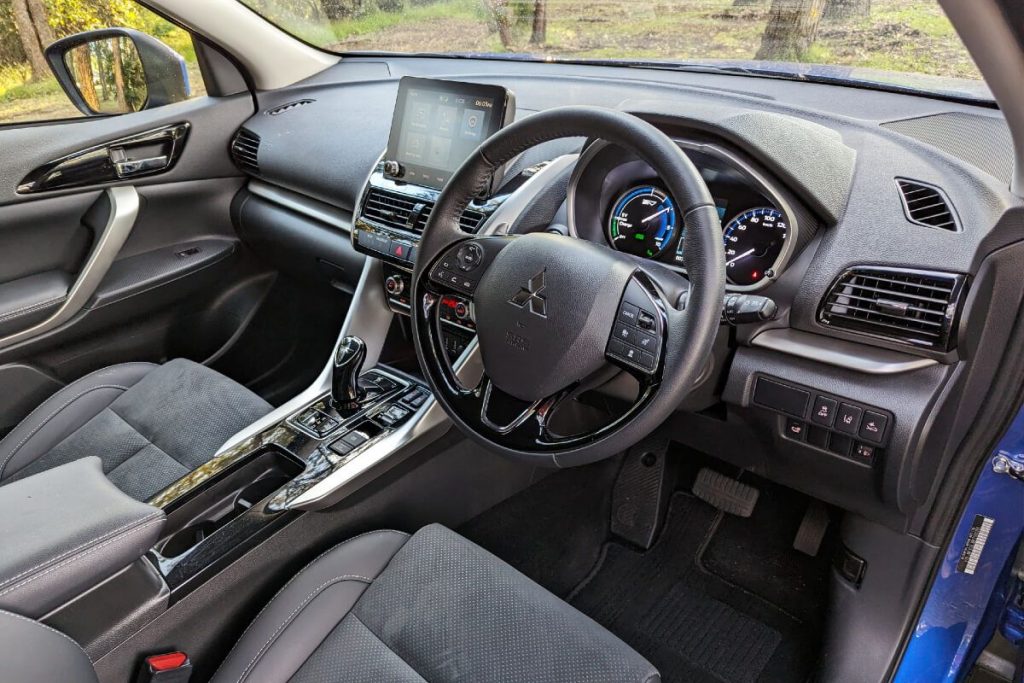
seniordriver comments
The Mitsubishi Eclipse Cross PHEV is something of a curate’s egg … good in parts, not so much in others.
Let’s start with the obvious problem: the PHEV costs $14,750 more than its equivalent 1.5-litre sibling. So you’ll need to do the math to see if the additional cost will be worthwhile. In most cases, it probably won’t.
And it has been our experience that most people simple won’t bother plugging it in, so a lot of mileage will be done using good ol’ petrol power.
Another whinge is that the Aspire simply doesn’t feel like a $50,000 car, and that’s because it isn’t. It’s a $37,000 car with some additional electric motors.
The omission of wireless phone charging or the more efficient USB-C ports is disappointing.
But Mitsubishi’s 10-year warranty (subject to servicing being carried out by a Mitsubishi dealer) is still a major selling point.
Chris laments the removal of the two-piece rear window in the previous model. It certainly was a distinctive feature, but we found it distracting and sometimes difficult to see through. Good riddance, we say.
